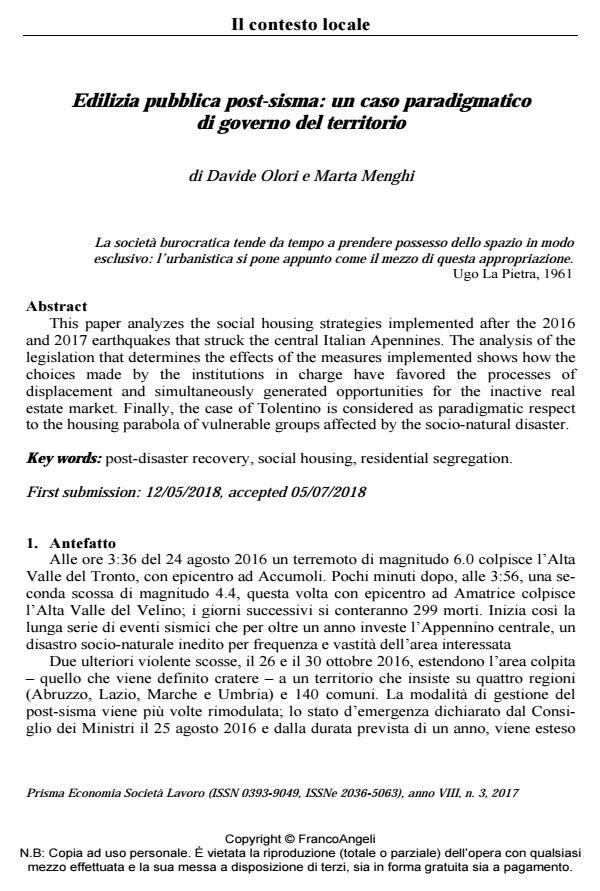Edilizia pubblica post-sisma: un caso paradigmatico di governo del territorio
Journal title PRISMA Economia - Società - Lavoro
Author/s Davide Olori, Marta Menghi
Publishing Year 2018 Issue 2017/3
Language Italian Pages 20 P. 58-77 File size 342 KB
DOI 10.3280/PRI2017-003005
DOI is like a bar code for intellectual property: to have more infomation
click here
Below, you can see the article first page
If you want to buy this article in PDF format, you can do it, following the instructions to buy download credits

FrancoAngeli is member of Publishers International Linking Association, Inc (PILA), a not-for-profit association which run the CrossRef service enabling links to and from online scholarly content.
This paper analyzes the social housing strategies implemented after the 2016 and 2017 earthquakes that struck the central Italian Apennines. The analysis of the legislation that determines the effects of the measures implemented shows how the choices made by the institutions in charge have favored the processes of displacement and simultaneously generated opportunities for the inactive real estate market. Finally, the case of Tolentino is considered as paradigmatic respect to the housing parabola of vulnerable groups affected by the socio-natural disaster.
Keywords: Post-disaster recovery, social housing, residential segregation
Davide Olori, Marta Menghi, Edilizia pubblica post-sisma: un caso paradigmatico di governo del territorio in "PRISMA Economia - Società - Lavoro" 3/2017, pp 58-77, DOI: 10.3280/PRI2017-003005